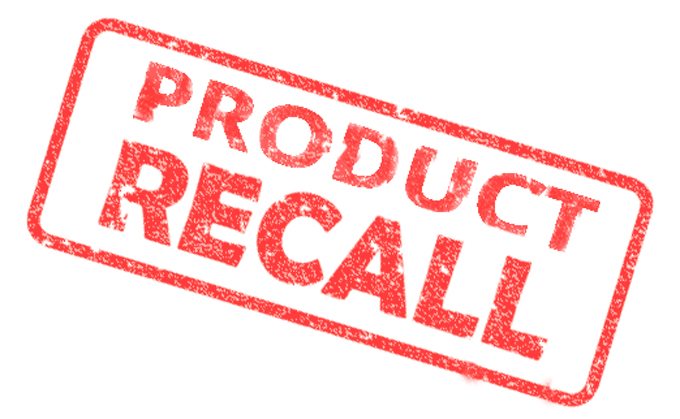Product Safety Recalls Are on the Rise in the United States

Samsung’s Galaxy Note 7 smartphone has been in the news recently for its occasional spontaneous combustion, which was presumably not a planned product feature. Faulty components caused the battery in about .1% of these devices to overheat and catch fire or even explode, often causing both personal and property damage. Samsung stopped selling the devices in early September, and on September 15, 2016, they issued a full product recall of the more than 2.5 million phones already sold.
But Samsung is not the only business dealing with a defective product. With the Consumer Product Safety Commission (CPSC) reporting more than 3,800 deaths in a one-year period related to the use of consumer products, consumers need to understand how recalls work and which basic safety precautions they can take to avoid injury.
How Product Recalls Work
The CPSC recalls nearly one product every day. The products recalled range from phones to toys to cars and everything in between.
Recalls are usually initiated after consumers report a problem. Manufacturers then report these complaints to the CPSC, which investigates to see if a recall is necessary. If it is, then the company and the CPSC will typically negotiate the terms of the recall, although the CPSC can sue the company to force a recall (which hasn’t happened since 2001).
Recalls Are Increasing
The number of recalls for motor vehicles hit a record number in 2014, and the 51 million vehicles recalled in 2015 broke that record in short order. In addition, annual recalls for food products have doubled since 2002.
The rise in recalls isn’t necessarily because there are more product problems today. Experts believe that better detection of product issues is responsible for part of the increase, and there are also more regulations for consumer products today and a greater attention to safety.
Better detection isn’t the only factor that may be leading to more products recalls, though. As more manufacturers rely on the same few suppliers, a problem with one component can lead to a recall over several different products. This issue played a part in the 2014 Takata airbag recall that affected 14 automakers.
Protect Your Kids from Dangerous Toys
Children’s products accounted for more than 40 percent of recalls between 2006 and 2011. Children are, of course, less able to determine the danger of a product by themselves and are often the most vulnerable among product users. For example, young children often like to put objects in their mouths, and many objects can quickly become a choking hazard.
Product recalls attempt to address products that might become dangerous even when used correctly, but parents should still be on the lookout, as the CPSC can’t catch every dangerous product before it causes harm. Parents should especially watch for small pieces that could break off a toy, game, or other product. It’s also important to heed the age ranges indicated on a product, which often indicate when it isn’t safe for younger children.
Check for Recalls
Especially if you have small children, it’s good to regularly check for recalls. Think about products you own that might cause harm if they were faulty (children’s furniture and toys, motor vehicles, appliances, etc.) and check recalls.gov to see if there has been a recall issued. You should also register your products with the manufacturer when you purchase them so you can receive an alert if a recall is put into effect.
Call Hossley & Embry for Product Liability Cases
It’s often the case that damage, injury, or loss related to a product could have been minimized or prevented through better design or monitoring. This means if you or a loved one was injured (or worse) due to a product defect, you may be entitled to compensation and should speak with a qualified and experienced attorney about your case.
Our team of attorneys at Hossley & Embry have years of experience in personal injury cases and are proud to represent victims who have suffered due to a defective product or manufacturing oversight. If you or a loved one has been injured by a dangerous product, please call (866) 522-9265 or fill out our convenient online contact form to set up your free consultation. We have the resources available, including charter aircraft, to travel throughout Texas and the United States on short notice to investigate your potential claim.
References
2015 annual report to the President and Congress. (2016, September 15). Consumer Product Safety Commission. Retrieved from http://www.cpsc.gov//Global/About-CPSC/Reports/Annual-Reports/FY15AnnualReport.pdf
Cowley, S. (2016, May 31). Product recalls rise with better detection and fewer suppliers. New York Times. Retrieved from http://www.nytimes.com/2016/05/30/business/product-recalls-rise-with-better-detection-and-fewer-suppliers.html
Disis, J. (2016, September 15). U.S. Formally recalls Samsung Galaxy Note 7. CNN. Retrieved from http://money.cnn.com/2016/09/15/technology/samsung-galaxy-note-7-cpsc/index.html
Koeppel, D. (2012, June 21). How a product recall works. Popular Mechanics. Retrieved from http://www.popularmechanics.com/technology/gadgets/a7827/how-a-product-recall-works-9891205/
Lipka, M. (2015, August 5). Why so many recalls are child-related. Parents. Retrieved from http://www.parents.com/baby/safety/toy/why-so-many-recalls-are-child-related/
Rosekind, M. (2016, January 21). Remarks: Washington Auto Show keynote address. National Highway Traffic Safety Administration (NHTSA). Retrieved September 17, 2016 from http://www.nhtsa.gov/About+NHTSA/Speeches,+Press+Events+&+Testimonies/mr-washington-auto-show-01212016







